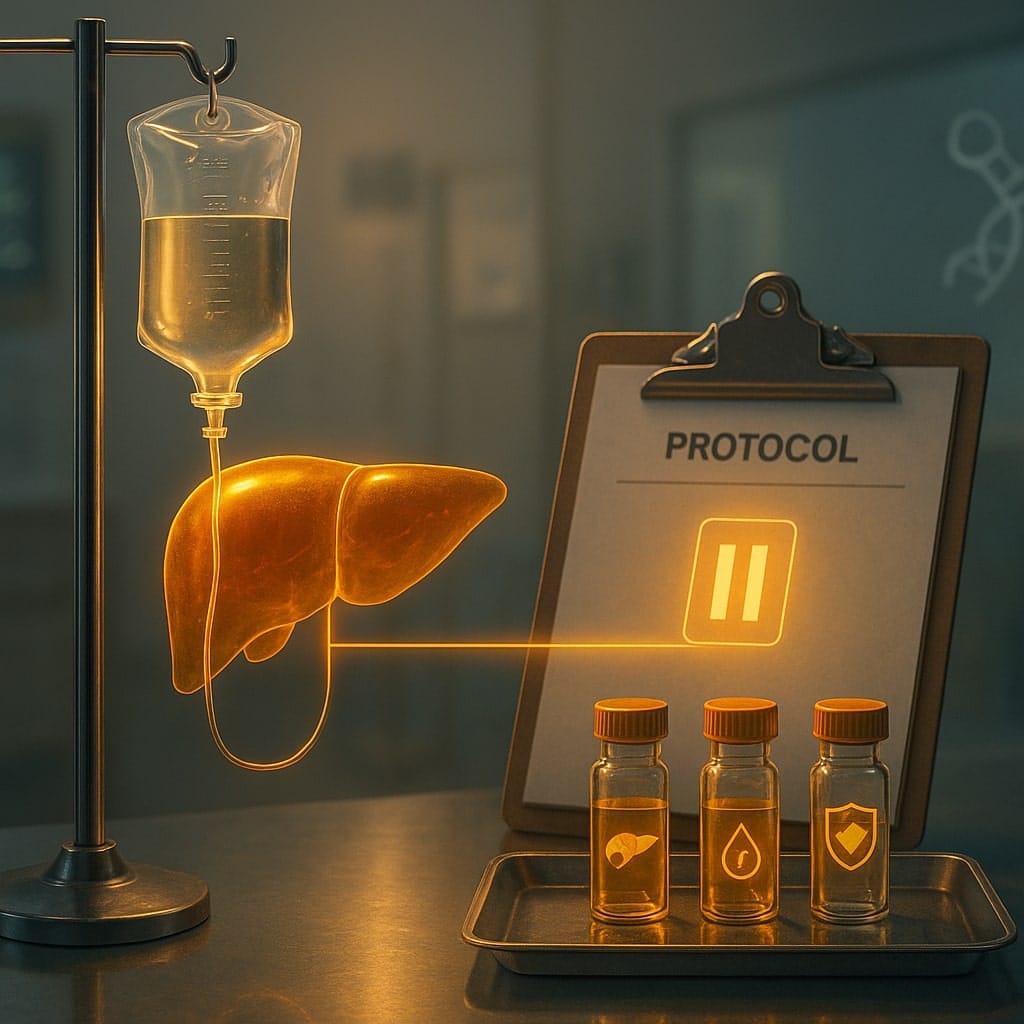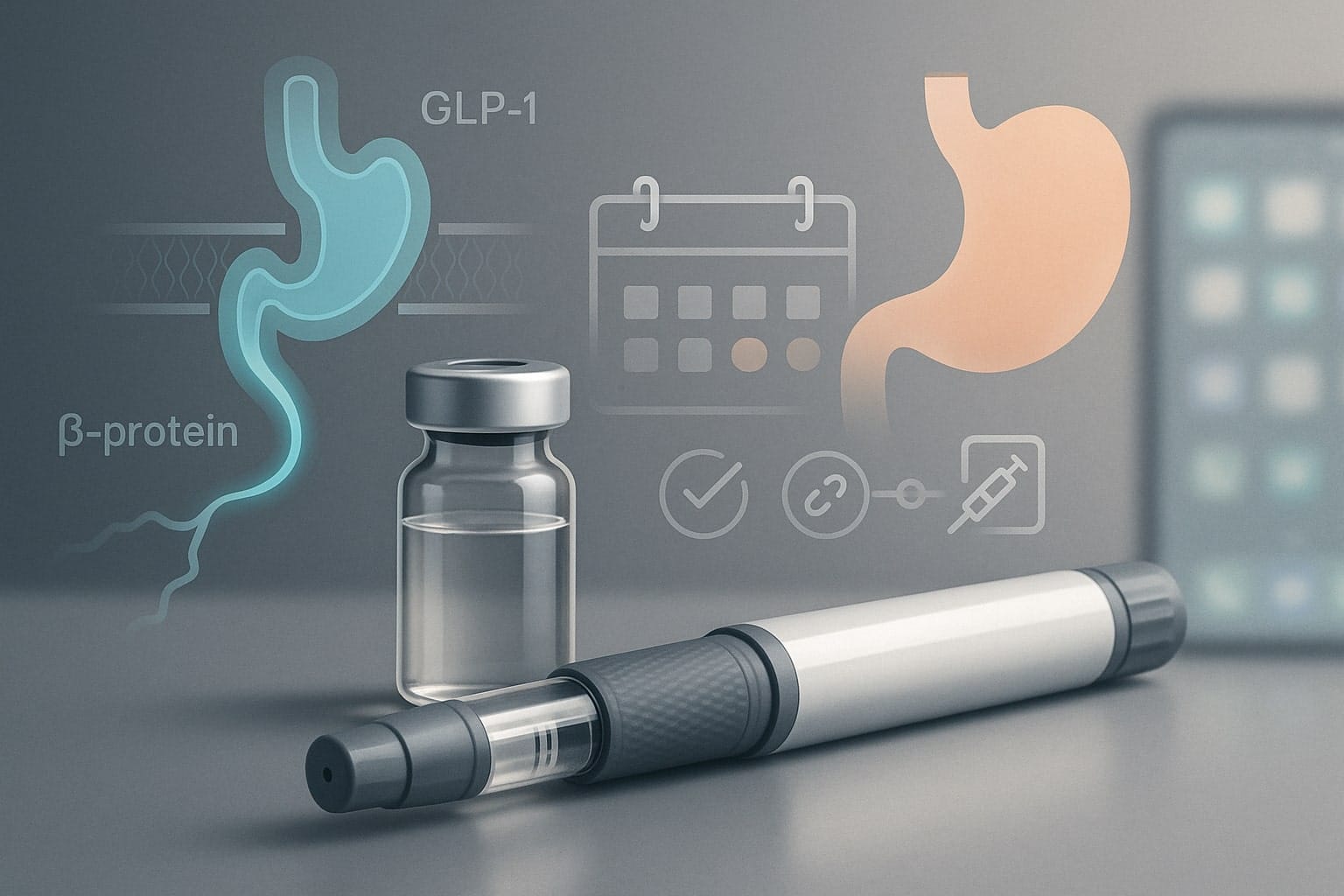In a biotech landscape often preoccupied with the elusive fountain of youth, a new strategy is emerging: tackle aging one organ at a time. The latest example is NewLimit – a California startup co-founded by Coinbase CEO Brian Armstrong – which just raised an eye-popping $130 million Series B round to advance an mRNA-based therapy aimed at rejuvenating liver cells. Rather than pursuing a nebulous “anti-aging” miracle for the whole body, NewLimit is zeroing in on the liver, betting that making this vital organ biologically younger can be a first step toward extending healthy lifespan. The company’s approach, using lipid nanoparticle (LNP) delivery of mRNA encoding youthful transcription factors, reflects a pragmatic calculus: the liver offers strategic, biological and regulatory advantages as a proving ground for epigenetic reprogramming. NewLimit’s big bet raises a tantalizing question for the longevity field – could rejuvenating a single organ like the liver pave the way for broader anti-aging breakthroughs?

Table of Contents
ToggleWhy the Liver? A Strategic Choice for Rejuvenation
NewLimit’s decision to target hepatocytes (the main functional cells of the liver) as its first foray into age-reversal is not happenstance. The liver plays a central role in metabolism and detoxification, and age-related decline in liver function is well documented – for instance, older livers clear toxins and metabolize substances less efficiently than young ones. Jacob Kimmel, NewLimit’s co-founder and president, notes that “old cells have a loss of function” in the tissues they’ve examined, and in the liver specifically, “older cells aren’t as good at processing alcohol and caffeine as younger cells”. By focusing on this organ, NewLimit aims to demonstrably restore a youthful level of function – say, improving how an aged liver processes fats, drugs or alcohol – which can be measured in the clinic. Indeed, the startup reports it has already identified prototype mRNA “reprogramming” treatments that make old liver cells act younger in lab tests, restoring aged cells’ ability to handle fat and alcohol to more youthful levels. These tangible functional readouts give NewLimit a clear benchmark for success.
Strategically, choosing the liver also aligns with where today’s drug delivery technology shines. LNP-formulated RNA therapeutics tend to accumulate in the liver by default, a fact well understood from the success of the first LNP–RNA drug, Alnylam’s patisiran. NewLimit is effectively turning this quirk into a feature. By sending mRNA instructions via IV infusion, it can harness an existing delivery route that regulators are familiar with – Kimmel points out that patisiran (brand name Onpattro) is already given every three weeks safely and effectively, setting “the minimum bar” for their therapy’s dosing regimen. In other words, the liver is a tractable target: it’s a large, accessible organ that soaks up nanoparticles, and medicine can reach it repeatedly without invasive procedures. This contrasts with, say, trying to reprogram the brain or muscles, which would demand more complex delivery solutions.
Biologically, the liver may also be a safer canvas for experimentation. As one of the few organs capable of significant regeneration, the liver can better tolerate cellular turnover and repair. Partial reprogramming – the process of dialing back cells’ epigenetic age without erasing their identity – carries a risk of pushing cells too far toward a stem-like state. In a regenerative organ like the liver, there’s inherent resilience: even if a fraction of cells respond unpredictably, the organ can often compensate or renew itself. This gives NewLimit some buffer to fine-tune their mRNA cocktail of “youthful” transcription factors, which likely draw inspiration from the Yamanaka factors that famously reset cellular age. By adjusting dosage and timing, NewLimit hopes to rejuvenate hepatocytes’ epigenome (the patterns of chemical marks on DNA that control gene activity) just enough to restore youthful function, but not so much that the cells forget they’re liver cells. It’s a delicate balance, but early evidence suggests they can pull it off in vitro.
Measuring Success: Biomarkers and a Smoother FDA Path
Perhaps the most compelling reason to choose the liver is the wealth of quantifiable biomarkers and clinical endpoints it offers. Aging itself is not recognized as a disease by regulators, but liver diseases are – and they come with established metrics to gauge improvement. NewLimit’s first indication is poised to be alcohol-related liver disease, a condition with clear clinical measures: liver enzymes like ALT and AST in the blood indicate hepatocyte injury, and fibrosis scores from biopsies or scans track tissue scarring. These markers give the FDA something concrete to evaluate. For example, a significant drop in serum ALT – widely considered a reliable biomarker of liver health – or an improvement in fibrosis stage could signal that the therapy is working. By targeting a specific liver pathology, NewLimit can aim for outcomes that meet traditional endpoints (such as “reversal of fibrosis” or “normalized liver enzymes”), which could support an approval on a surrogate measure, much as other liver drugs have done. In fact, the FDA recently showed willingness to approve a NASH (non-alcoholic steatohepatitis) therapy based on improved liver histology at 12 months, underscoring that regulators will fast-track treatments for serious liver conditions if the data are convincing.
NewLimit explicitly compares its strategy to the trajectory of GLP-1 agonists – drugs like semaglutide that started as diabetes treatments and then expanded to obesity and beyond. By first demonstrating efficacy in alcoholic liver disease, a patient group with acute need, the company hopes to earn a regulatory green light and then broaden into larger populations. “Following an approval in alcoholic liver disease, if we are so lucky, we would then hope to expand to earlier stage liver disease patients for multiple etiologies, and eventually to treating patients who have metabolic syndrome,” Kimmel explained. In practical terms, that means NewLimit could initially run a relatively contained clinical trial (for instance, patients with alcoholic hepatitis or early cirrhosis who have few options), show that its mRNA therapy improves liver function or reduces fibrosis, and get that indication approved. With safety and efficacy established in one subset, subsequent trials could target non-alcoholic fatty liver disease or metabolic syndrome – conditions that affect tens of millions and are closely tied to aging. This stepping-stone approach is shrewd: it provides a clear path through the FDA by framing the therapy as treating a disease, while keeping the long-term vision of broader “healthspan” extension very much in play. In a field often stymied by the question of how to get anti-aging drugs approved, carving the problem into organ-specific indications might be the golden ticket.
Avoiding Immune Pitfalls: Local Impact, Lower Risk
Another advantage of an organ-targeted rejuvenation therapy is the potential to sidestep some of the systemic risks that have plagued more ambitious age-reversal experiments. Reprogramming the entire body of an animal, as some studies have attempted, can trigger unintended immune reactions and other side effects. A recent Stanford study highlighted this contrast: mice that underwent partial reprogramming throughout their bodies developed increased inflammation in the brain and only modest benefits, whereas mice reprogrammed only in their brains saw some functional improvements (like new neuron growth) with fewer off-target issues – though even those had some inflammation as a side effect. The lesson seems to be that dialing back the age of cells in a controlled, tissue-specific way might avoid overwhelming the organism’s equilibrium. By confining its intervention to the liver, NewLimit reduces the chance of provoking a body-wide immune alarm or driving widespread cells into a dangerously dedifferentiated state.
Immunogenicity is a key concern for any therapy that introduces foreign genes or RNA. But mRNA may offer an edge here as well. Unlike DNA-based gene therapies, mRNA does not integrate into the genome; its effects are transient, lasting just long enough to nudge cells into a younger state. This transient nature, combined with careful chemical modifications to the mRNA, helps blunt the innate immune response that unmodified RNA can spark. In the context of the liver, which is naturally a somewhat immunotolerant organ (given its role in filtering blood from the gut, rich in foreign antigens), an mRNA therapy delivered locally may cause even less systemic disturbance. By repeating doses periodically (e.g. every few weeks, as planned), the treatment can maintain rejuvenation effects without permanent genetic changes. If any immune issues do arise – say, mild inflammation or cytokine bumps – clinicians can pause or adjust dosing. This controllability stands in contrast to one-time gene therapies or whole-body treatments, where an adverse reaction can be harder to manage. In short, treating one organ at a time with a modulated platform like mRNA could be a safer proposition, lowering the risk that the cure is worse than the disease.
The mRNA Advantage: Programmable and Precise
Underlying NewLimit’s approach is a bet on mRNA as the therapeutic vehicle, a choice that offers distinct advantages for regenerative medicine. Messenger RNA can transiently express the rejuvenating factors inside cells without permanently altering the genome, which means the “dose” of reprogramming can be carefully controlled. This contrasts with using DNA viruses to deliver genes, which might flip cellular switches on full blast or integrate in unpredictable ways. With mRNA, NewLimit can give a gentle push to hepatocytes’ gene networks, then step back and observe – and if needed, give another pulse later. This tunability is a key appeal. Turn Biotechnologies emphasizes this in its own mRNA reprogramming platform, calling it “safe, fast, efficient and tunable” precisely because dosing and timing of factor exposure can be dialed in finely. By adding or subtracting specific transcription factors and pulsing cells with mRNA in a controlled manner, it’s possible to “move the epigenome to a more youthful state one step at a time” while preserving cell identity. In essence, mRNA lets scientists play the epigenetic piano with multiple keys, hitting notes of youthfulness without crashing the whole symphony of cellular function.
The past few years have dramatically de-risked mRNA technology. Once seen as too unstable and immunogenic, synthetic mRNA is now a proven therapeutic modality, thanks to modifications like pseudouridine that evade innate immune sensors and LNP formulations that ferry the message into cells. The COVID-19 vaccine rollout validated that mRNA therapeutics can be manufactured at scale and safely delivered to millions – a trial by fire that accelerated the field by a decade. For NewLimit, this means its platform doesn’t need a new delivery miracle; it can piggyback on the lipid-based systems already refined for liver-targeted RNA drugs and vaccines. Manufacturing mRNA is also faster and more adaptable than biologics or small molecules – a new combination of rejuvenation factors is just a sequence rewrite away. This flexibility, coupled with the data-driven design loop that NewLimit’s team is using (including AI models to predict effective factor mixes), could allow rapid iteration to optimize results. In regenerative medicine, where we’re essentially programming cells to behave younger, mRNA is emerging as the code of choice – versatile, ephemeral, and powerful when executed correctly.
NewLimit vs. the Rest: A Focused Differentiator in Longevity R&D
NewLimit’s liver-first game plan also distinguishes it from other players in the epigenetic rejuvenation race, many of whom have taken different tacks. Turn Biotechnologies, for example, has been pursuing epigenetic reprogramming primarily in the context of skin and cosmetic applications – its ERA™ platform delivers mRNAs encoding reprogramming factors to rejuvenate skin cells, with an initial product (TRN-001) aimed at repairing aged skin at the cellular level. Turn Bio touts its mRNA approach as a way to restore youthful function in skin cells and is positioning TRN-001 to be the first therapy to truly rejuvenate damaged skin tissue. While skin is a logical first target (being accessible and not life-threatening), this approach skews toward the anti-aging cosmetics market rather than treating an age-related disease. Another startup, Rejuvenate Bio, initially tested combinations of gene therapies in elderly dogs – targeting heart failure and even obesity in our canine companions – as a springboard to eventually treat human age-related ailments. Their work on mitral valve disease in dogs, a common age-linked cardiac condition in certain breeds, is generating data in the veterinary realm that could inform human trials down the road.
Then there’s the behemoth: Altos Labs, launched in 2022 with an unprecedented $3 billion in funding and a star-studded roster of scientists. Altos’s mission is broadly to “restore cell health and resilience” via cellular rejuvenation, and it has poured resources into basic research on partial reprogramming in multiple tissues. Yet, despite (or because of) its vast scope, Altos has not publicly pinned itself to an initial clinical target. As a result, it remains in the preclinical discovery realm, exploring everything from muscle regeneration to neurodegeneration in lab studies. While Altos certainly has the luxury to play the long game, its expansive approach contrasts with NewLimit’s more focused tactic of picking one organ and one indication to start with. Almost all longevity researchers agree that to get reprogramming therapies into humans, efforts will need to focus on specific diseases related to aging, not aging itself – since aging isn’t a disease, according to the FDA, drugs can’t be approved to treat it. This underscores a growing consensus: to make headway, even deep-pocketed anti-aging companies are zeroing in on defined illnesses as proxies for aging. NewLimit just happens to be ahead in choosing its beachhead.
NewLimit’s emphasis on the liver could confer a first-mover advantage in the nascent rejuvenation therapeutics market. Competitors like Turn are working on localized therapies (skin) that may face a different kind of regulatory pathway (likely through dermatology or even cosmetics channels), and others like Altos or Life Biosciences are still figuring out which organ or condition to tackle first. By picking an organ that gives both a clear medical indication and systemic importance, NewLimit is positioning itself to be among the first to bring an epigenetic reprogramming treatment into formal clinical trials – possibly leapfrogging better-funded rivals in terms of real-world impact. If its upcoming animal studies and eventual human trials show that an mRNA shot can rejuvenate an aging liver – improving lab values or even patients’ vitality – it would not only validate NewLimit’s platform but also blaze a regulatory trail that others in longevity research could follow.
The Longevity Landscape: Bridging Hype and Reality
NewLimit’s targeted approach comes at a pivotal time for the longevity biotech field. In the wake of landmark mouse experiments in the 2010s – where a 2016 trial at the Salk Institute used Yamanaka factors to extend the lifespan of progeria-afflicted mice by 30% – money flooded into epigenetic reprogramming ventures. Tech titans and venture capitalists started throwing billions of dollars at labs exploring the technique, heralding what some dubbed a longevity gold rush. But as this gold rush matured, a reality check set in. The biology of aging is incredibly complex, and early reprogramming attempts in animals have sometimes led to “gruesome tumors and even deaths” when misapplied. Skeptics in the research community have cautioned that rushing into whole-body rejuvenation could be perilous, equating uncontrolled cell reprogramming with inviting cancer. This backdrop has tempered the initial hype with a dose of caution: longevity startups must balance ambition with safety and scientific rigor.
We’re now seeing a convergence between longevity research and traditional drug development. Rather than branding themselves as “anti-aging” cure-alls, many companies are focusing on diseases of aging – a pragmatic rebranding that speaks to regulators and investors. As one market analysis noted, a lot of investment in life-extension is actually going into firms targeting specific conditions like cardiovascular disease or neurodegeneration, which “don’t pitch themselves as longevity startups” but clearly align with extending healthspan. There’s also a notable uptick in later-stage financing for longevity ventures that have defined clinical goals. For example, BioAge Labs – which searches for anti-aging targets in human longevity data – raised a $170 million round and is heading for an IPO with a lead drug for metabolic disease. The field is learning that to win support (and not overpromise), it must speak the language of evidence-based medicine: concrete indications, measurable endpoints, and stepwise progress.
Regulators, for their part, are slowly warming to therapies that address age-related decline, especially if pitched as treating an accepted medical condition. While the FDA will not approve a drug for “aging” per se, it has shown openness via expedited pathways for serious diseases common in older adults. In just the past couple of years, we’ve seen Fast Track designations for drugs targeting conditions like NASH with liver fibrosis, as well as the first FDA approval of a NASH treatment (resmetirom) under an accelerated pathway based on interim biopsy results. This trend bodes well for NewLimit. If their liver-rejuvenating mRNA can demonstrate reversal of liver damage or enhanced function, the regulatory precedent suggests a favorable reception – perhaps Fast Track status or breakthrough designation – given the dearth of options for conditions like alcoholic liver disease. Moreover, the mRNA platform itself benefits from regulatory familiarity after the COVID-19 vaccine rollout. What once would have been a radical idea (using mRNA in patients repeatedly) is now a proven modality, with established manufacturing and safety profiles. This technological tailwind means NewLimit’s team can spend less time convincing people that mRNA can be a drug, and more time on showing that their specific application works.
Finally, there’s the commercial allure. A therapy that genuinely rejuvenates an organ could upend how we treat chronic diseases. In the liver’s case, a successful drug might start in a niche like alcoholic hepatitis, but its market could eventually encompass millions with fatty liver disease, diabetes-related liver stress, or even preventive use in aging populations. If NewLimit can navigate to an initial approval, it may find itself holding a platform that can be expanded into a suite of rejuvenation therapies organ by organ – a hugely lucrative and impactful proposition.
A First Step Toward Age-Defying Medicine
As NewLimit takes its moonshot into the liver, it encapsulates the evolution of the longevity sector from moonshine to medicine. The company’s $130 million wager on a single organ reflects both a calculated risk and a philosophical shift: to ultimately extend human healthspan, perhaps we must start by healing what’s broken, one piece at a time. By focusing on hepatocytes and the concrete maladies of an aging liver, NewLimit is crafting a narrative that regulators, scientists, and even skeptics can engage with – one of evidence over exuberance. Should its mRNA epigenetic reprogramming therapy succeed, the payoff is immense: not only a new treatment for liver disease, but a proof-of-concept that aging in a human organ can be pharmacologically reversed in a safe, controlled manner.
There are of course no guarantees. Biology has a way of humbling us, and turning back the clock on cells without unintended consequences is frontier science. NewLimit will have to demonstrate that its rejuvenated cells behave normally and don’t, for example, spark tumors or uncontrolled growth – concerns that critics have raised about the whole reprogramming enterprise. The company will also need to show that improvements in biomarkers translate to tangible health benefits for patients. Yet, in aiming for something as audacious as age reversal, proceeding methodically via the liver seems a wise compromise between vision and verifiability.
If NewLimit’s approach works, the implications extend far beyond one startup’s success. It could validate the idea that aging is indeed malleable, but that the route to conquering it lies in treating specific aging organs and systems stepwise, rather than chasing a mythical panacea. It would lend credence to the notion that “healthspan” can be increased by targeted therapies that roll back cellular age, one tissue at a time. And it would likely spur a new wave of investment and competition – a race not to “cure aging” overnight, but to chip away at it through many small victories. In an industry that has seen its share of hype and disappointment, NewLimit’s liver gambit offers something pragmatic yet profound: the hope that we might rejuvenate ourselves from the inside out, starting with the body’s metabolic core. The road to that future is long, but rejuvenating even one organ moves us a crucial step closer. One organ down, many more to go for longevity.












